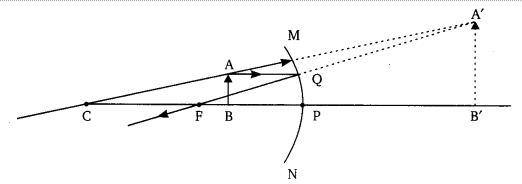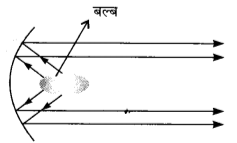NCERT Solutions for Class 10 Science Chapter 10 Light Reflection and Refraction in Hindi PDF Download
NCERT Solutions for Class 10 Science Hindi Chapter 10 Light Reflection and Refraction
FAQs on NCERT Solutions for Class 10 Science Hindi Chapter 10 Light Reflection and Refraction
1. What is the best online website for NCERT Solutions for class 10 science?
Class 10 Science is definitely a complex subject, and therefore, to make it simpler, let Vedantu have your back. Vedantu not only simplifies your learning process but also adds fun to it. It provides students with properly planned and well-crafted study guides. NCERT Solutions provided by Vedantu also supply the best quality. They have been curated by the team of expert tutors in easy language adhering to the CBSE curriculum.
2. How many chapters are there in class 10 science NCERT Books?
The Science book of tenth grade consists of 16 chapters:
Chemical Reactions and Equations
Acids, Bases and Salts
Metals and Non-metals
Carbon and its Compounds
Periodic Classification of Elements
Life Processes
Control and Coordination
How do Organisms Reproduce?
Heredity and Evolution
Light – Reflection and Refraction
The Human Eye and the Colourful World
Electricity
Magnetic Effects of Electric Current
Sources of Energy
Our Environment
Sustainable Management of Natural Resources.
3. Name a mirror that can give an erect and enlarged image of an object?
A concave mirror produces an erect and enlarged image of an object. A concave mirror is defined as a spherical mirror with its reflecting surface curved inwardly. When light strikes at a point and reflects back from the reflecting surface of the concave mirror, it converges at a point. Hence, it's also called a converging mirror. Concave mirrors are used in astronomical telescopes and headlights.
4. Define the principal focus of a concave mirror.
The point on the principal axis where all the parallel light rays intersect after reflecting from the concave mirror is known as the principal focus of a concave mirror. The principal focus is denoted by F. The distance between the principal focus and the pole is called a focal point and is denoted by f. When the object is at infinity, it forms a real and inverted image at F.
5. What are the important topics covered in Class 10 Science Chapter 10?
Following are the important topics in Class 10 Science Chapter 10:
Reflection
Spherical mirrors (concave and convex mirrors)
Image formation by spherical mirrors (representation by ray diagrams)
Sign convention for spherical mirrors
Refraction
Refraction through a glass slab
The refractive index
Spherical lenses (concave and convex lenses)
Image formation by spherical lenses (representation by ray diagrams)
Sign convention for spherical lenses
Lens formula and magnification
Power of a lens.




















 Watch Video
Watch Video



















